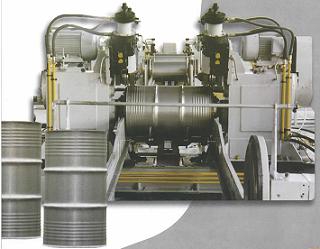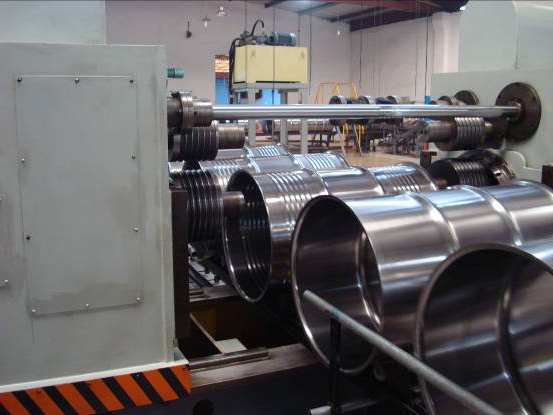The manufacture of steel tanks for the storage and transportation of materials involves the selection of the best technology. For the practical implementation of the project, many factors must be taken into account. The most important of them is equipment for the production of metal barrels, which in the end will make it possible to produce high quality products.
Technology system
A typical manufacturing scheme consists of several stages of processing the feedstock. But first you need to decide on the range of products. The main parameter is the size of the metal barrels and the wall thickness. The first of them is decisive in the planning of production - the segment of the sales market and the planned sales volume will depend on it.

It is best to adhere to standard dimensions. The height of the product should be 880 mm, diameter - up to 610 mm. In this case, the barrel capacity will be equal to 208 liters. The bottom should be an integral part of the structure, and the installation mechanism of the top cover should ensure tightness.
The production line consists of the following components:
- Preparation of raw materials for processing. For this, a cantilever winder is used.
- Metal cutting with a hydraulic press.
- The process of forming stiffeners (recesses) on the body of the product.
- Welding and rolling the edges of the barrel.
- Painting.
For each of the stages, the appropriate equipment for the production of metal barrels is selected.
Cutting
In the manufacture of steel tanks it is best to use rolled steel. This will not only reduce the number of scraps, but also significantly save storage space.

First you need to install the roll on the axis of the winder. It is best to choose a model with a guillotine knife, with which you can immediately form blanks of future structural elements. They should be divided by size: some are necessary for the formation of the body of the product, and from others they make the bottom and lid of the barrel.
Each production of metal barrels should be equipped with a mold for bottoms. This is a round steel plate, which is made for a specific model of press. After installing the metal sheet by pressure on its surface, a structural element is formed.
Welding
After checking the dimensions of the workpieces, you can proceed directly to the release of the finished product. At this stage, the sheet material of the body is subjected to bending using rolling machines.

A line for the production of metal barrels without this equipment will not be able to fulfill its functions. A blank sheet is installed on a shaft of a certain diameter (depending on the size of the future product). In the process of scrolling, a cylinder is formed, which must then be held together.
To create a tight connection, welding machines are used. According to the type of work, they are divided into point and seam patterns. The latter are more widespread because of their affordable cost. But in terms of functionality, they are inferior to point devices. The same applies to the quality of the joint - a minimal impact on the metal will not cause a difference in mechanical stress on the surface of the product.
At the end of the manufacturing process of the body and the bottoms, the edges are rolled. Then the structure is welded and sent for painting.
Leak test and painting
Professional equipment for the production of metal barrels should include a test bench on which the quality of products is checked. For this, the barrel is installed on the machine body. After air evacuation, the pressure parameter inside the workpiece is checked. If it remains stable, the product is of high quality.

At the end of the inspection, surface treatment is necessary - painting. First, the structure is thoroughly cleaned, and then covered with a primer. After it dries, the barrel is immersed in a paint bath, from where it is sent to the hot drying line. The fastening of the protective layer occurs through thermal exposure.
At the final stage of production, it is recommended to check the condition of the product again. This can be done visually and with test equipment. Then the finished product is sent to a warehouse for storage.
Since later barrels can be used to transport aggressive media, special attention should be paid to their workmanship. Each stage of production must be monitored for compliance with norms and standards.






